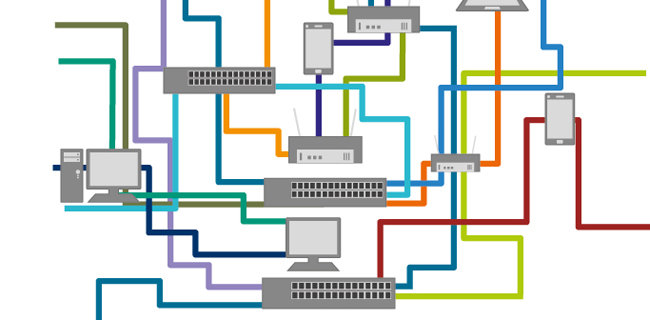EMAIL SUPPORT
dclessons@dclessons.comLOCATION
USWhat is Networking?

What is Networking?
But before that do you have an understanding of what network is all about? If yes, well and good. If it is a no, then let's check this video.
- Networking - Interacting with others to exchange information and develop professional or social contacts.
- Network - It is a connection between the computers to exchange the information.
In recent years, the entire IT portfolio depends on the current network infrastructure.
Next, let's see what OSI Layers are all about.
Open Standard Interface (OSI) is a standard protocol that defines the communication between the two devices. The function of the OSI model is partitioned into seven distinct layers. Let's visit the seven layers.
- Physical layer: It is used to transmit the raw data over a communication channel. It transmits data as 0's and 1's.
- Data layer: Data is broken into frames, and the frames are transmitted sequentially. The primary use of this layer is to avoid transmission error.
- Network layer: Data is transformed in the form of packets. This layer routes the packet logically with the help of the IP address.
- Transport layer: This layer is responsible for end-to-end connectivity over a network. Here, the data is transformed in the form of segments.
- Session layer: This layer is responsible for establishing the session between the devices. This layer synchronizes the data between devices and establishes the connection between them.
- Presentation layer: This layer is responsible for formatting the data and provide proper encryption for the data.
- Application layer: This layer is used for transmitting and distributing the data between the devices.
Networking Components
We have specific network devices like hubs, switches, and routers that are used for specific tasks.
- Hub: Forwards the packet to every device that is connected to its network. It does not have an intelligence purpose. It is part of the physical layer (layer 1) of the OSI model.
- Switch: Used to receive the data and transfer them to the destination. The switch has an intelligence purpose. It forwards the packets based on the destination address. It is a part of data link layer (layer 2).
- Router: Forwards the packet between the same or different network. It is a network layer device (layer 3). A router uses IP address.
Planes of Networking
- Data plane: Data plane is used to transfer the data between the devices. It deals with the entire processes involved in forwarding the packets from source to destination. It is also referred to asforwarding plane, user plane, carrier or bearer plane.
- Control plane: As the name suggests, it controls the movement of data. It deals with functions and processes that help determine the best path to transfer the data. Routing protocols are used in this plane to discover the devices on the network and understand network topology.
- Management plane: Its prime function is to control, monitor and manage the devices, and carry the administrative traffic. Protocols such as SNMP can be used for such operations.

Comment
You are will be the first.



LEAVE A COMMENT
Please login here to comment.